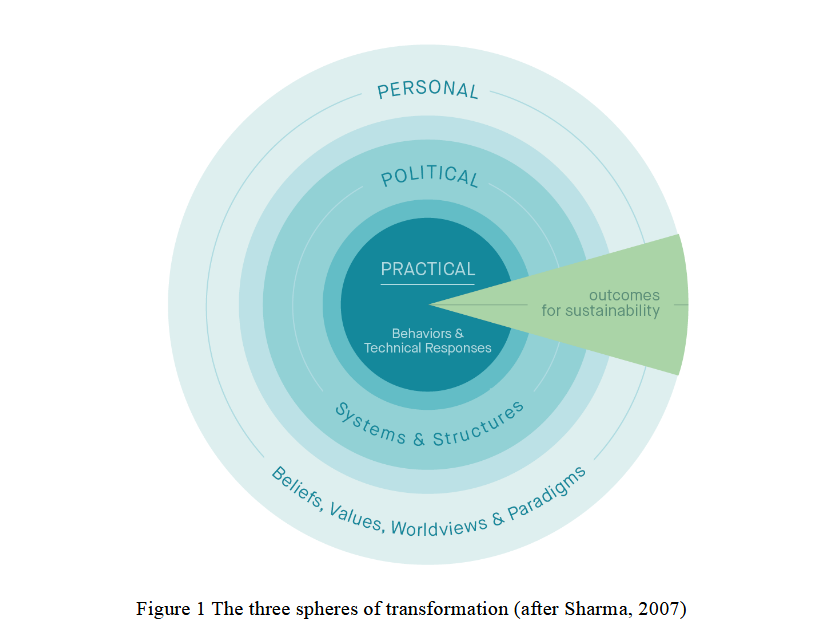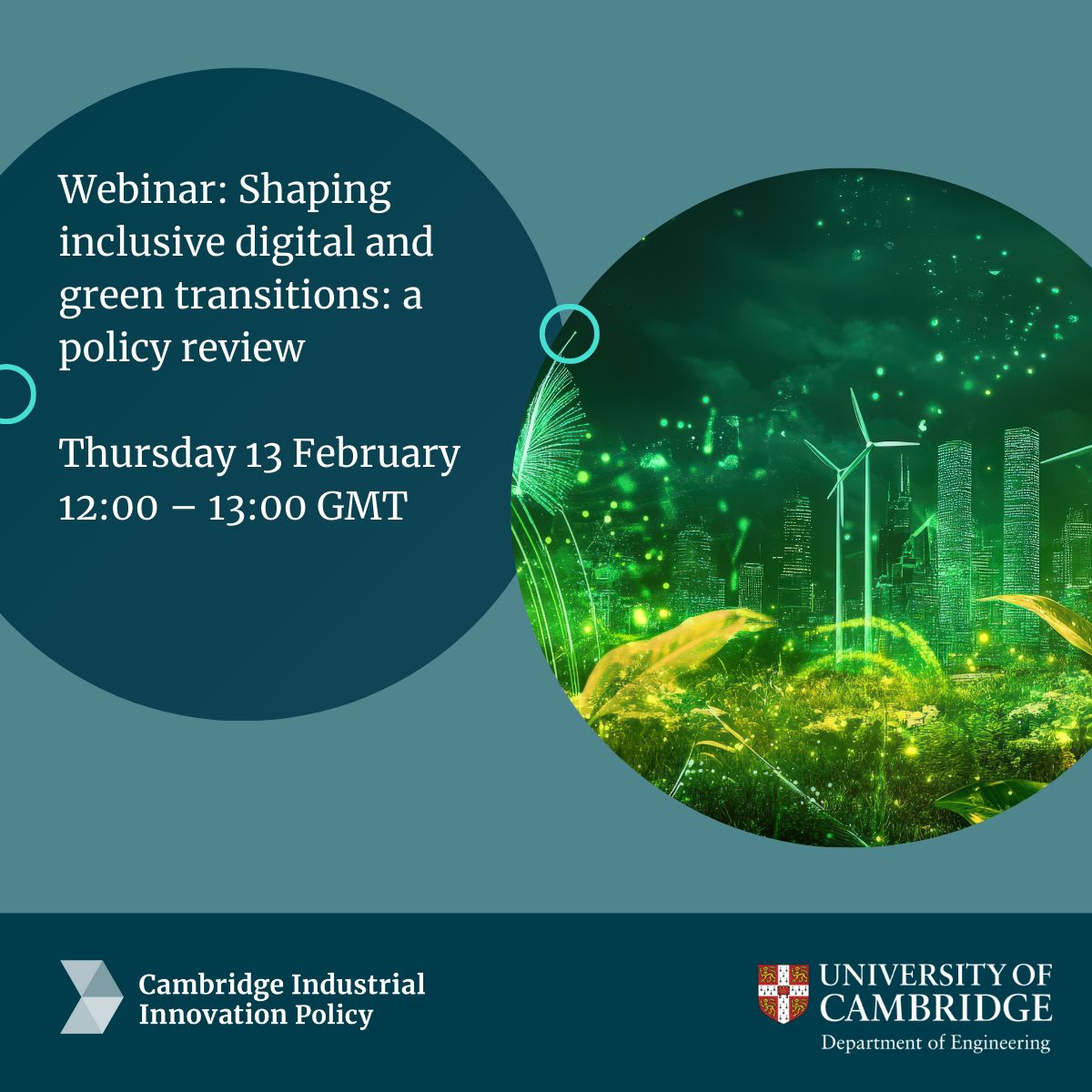In the Just Transform project, we make use of the Three Spheres of Transformation heuristic that consists of a practical, political, and personal sphere.
The practical sphere refers to technical interventions and technologies, such as digital tools and green infrastructure. This is mostly what we think of when we think of the green and digital transitions, and this is, of course, important, but there is much more going on in processes of social change. The next layer in the Three Spheres is the political sphere, which refers to societal systems and structures that support or hinder change, such as national or international strategies on the twin transitions. This is about how we organize society and whose voices are heard in decision-making, which is important for questions of justice. And finally, the personal sphere refers to the values, beliefs and cultural norms that inform what we prioritize and how we understand problems and solutions, such as the belief that men and women are equal or the sense that big issues like climate change or social inequality are too large for us to tackle.
The idea of the framework is that change processes need to cut across all three spheres simultaneously to generate transformative results (symbolized by the green pie slice in the Figure ). In the context of the green and digital transitions, this means the Norwegian government as well as municipalities, businesses and organizations will need to grapple not only with questions of technologies or skills but also with the political and personal/cultural aspects of both the green and the digital to ensure that these transitions support a just and more sustainable society.
As we have begun the fieldwork, we have made use of the framework when we engage with both policy experts (WP2), business managers (WP3) and employees (WP4). The framework has helped us ensure that our questions cover all relevant dimensions of change, from questions of skills (the practical sphere) to questions of strategies for inclusion (political sphere) and the values and ambitions that underpin a specific engagement with the twin transitions (personal sphere). As we start analyzing our material, the three spheres framework can also help us identify where the “center of gravity” is located in terms of priorities, as well as potential blind spots. This is especially important to the question of inclusion and exclusion in working life, which is the central focus of the project.
So far, the research conducted at the level of policy (WP2) has revealed a preoccupation with skills, understood largely as technical know-how (the practical sphere), and notions of inclusion and exclusion are limited to whether employees have opportunities to gain such skills. We are curious to see what happens to this (limited) understanding of how the twin transitions impact working life, once we move down to the level of businesses and individual employees!
Literature cited
O’Brien, K., 2018. Is the 1.5°C target possible? Exploring the three spheres of transformation. Current Opinion in Environmental Sustainability, Sustainability governance and transformation 2018 31, 153–160. https://doi.org/10.1016/j.cosust.2018.04.010
O’Brien, K., Sygna, L., 2013. Responding to climate change: the three spheres of transformation. Proceedings of Transformation in a Changing Climate 19–21.
Written by: Irmelin Gram-Hanssen






